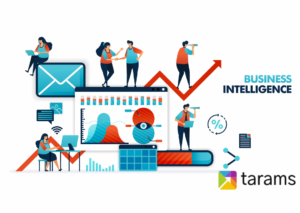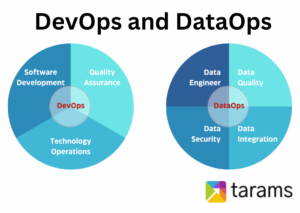Just at the start of the century, we came across a number of technologies such as wireless, web access and relational databases coming into more prominence than ever before. Analysis of huge databases came across as a challenge that was very real. The entire practice required a name.
It was in July 2013 that the name Big Data was adopted by the Oxford English Dictionary. But Big Data essentially is a term that has been around for a significant period of time.
Big Data essentially refers to data-sets that a very large and sometimes complicated to be processed by traditional forms of data processing.
With the advent of IoT and Mobile Technologies, Big Databecame more popular. This was aided by people using their digital devices and generating a significant amount of data, such as their geolocations, messages, images, videos, documents, etc., by using various applications to do so.
Big Data evolved to be known as a term for gathering, analyzing and using significant amounts of data in order to improve business operations. This data is growing at a rapid pace as more and more applications are becoming real time. In order to keep pace with the developments, Big Data and the processes are taking huge leaps in adapting to technology.
We live in a world where digital transactions are of great importance. A consumer is on a lookout for instant gratification. Things happen instantly, such as digital sales, providing feedback and making improvements as well. Correspondingly, a significant amount of data is produced as well. Putting this information to a requisite avail in real time offers access to the target audience. If a business fails to accomplish the same, the audience may move on to another brand. Here are some of the ways in which Big Data can transform an organization.
Business intelligence is the term used to define application and analysis of Big Data. It gives a competitive edge for business. By use of Big Data, difficult areas of operation and the most lucrative avenues and times for sales can be defined in advance. An organization can shape up its strategies accordingly.
By a deeper analysis of interactions and understanding the anomalies, certain patterns can be created. Big Data hence brings creative tools and products, which are new to the market.
Let us understand this by using an example.
If a certain appliance sells more than another one in warm weather, it may imply that heated conditions are adding to the sales. It can call for a study for markets most lucrative for sales of the gadget. Similarly, with a marketing campaign, brands can let consumers know about the availability of the gadget in places where it is likely to sell, and highlight it as the best selling product. This works towards boosting benefits to a significant extent.
5 Vs of Big Data
With reference to Big Data, the industry experts associate the 5 Vs. They should each be addressed distinctively in order to understand the effect that they lay on business cycles and profits, and how they interact with other Vs as well.
Volume
Upon dealing with Big Data, it is very important to presume the amount of data an organization is planning to use to gain insights. Similarly, the organization must be sure about where it is planning to store the data, and in what manner.
Variety
An organization must be comfortable in dealing with different types of data, and must be possessed with the right set of tools in order to ingest the information.
Velocity
If the Big Data technologies deliver outcomes fast, they make it easier for a business to put in continuous efforts towards improvement and streamline their work structures in real time. The results should be generated closer to in order to enhance their usability.
Veracity
The data input into the server should be accurate. The bigger picture should be considered in order to make sure that the outcomes are workable.
Value
In order to make sure that Big Data applications deliver actionable results, and a little bit of sorting over data collected too comes into the picture. This is because each of the bits of information collected is not of equal significance.
Role of Big Data Analytics
The essence of Big Datalies in use cases and insights, and not in voluminous data itself. Big Data analytics may be seen as a set of processes that are focused upon the examination of very huge sets of data, which are used to derive patterns which otherwise may not be visible. An analyst comes to discover of correlation, which helps with a prediction of market events before they occur and enables organizations to make corresponding strategies to deal with the events in the best possible way.
Market trends are highlighted by the use of Big Data, and the technology renders a higher degree of clarity for them. As a greater deal of information about customer preferences is derived, it makes way for market insights that can work towards enhancing a business.
An organization that puts applications of Big Data to avail is now positioned to come up with questions and queries. It puts even more insights at a business’s disposal. It is in the form of refined information that holds a potential for a business to get a competitive edge in their operations which makes way for higher profits.
Big Data applications hence come forth as the desired way to define Big Data and enhance the potential for its usability.
As per Industry Experts, Big Data will be placed better in the years to come. While it will be hardly visible and deliver tremendous business value, it won’t call for putting an end to manual labor or influence employment negatively at any level. The risk associated with security and compliance will be mitigated, while automation will allow staff to focus on tasks that deliver value. Big Data may give rise to new ways of working as well. Automation will facilitate even more effective management of Big Data.




